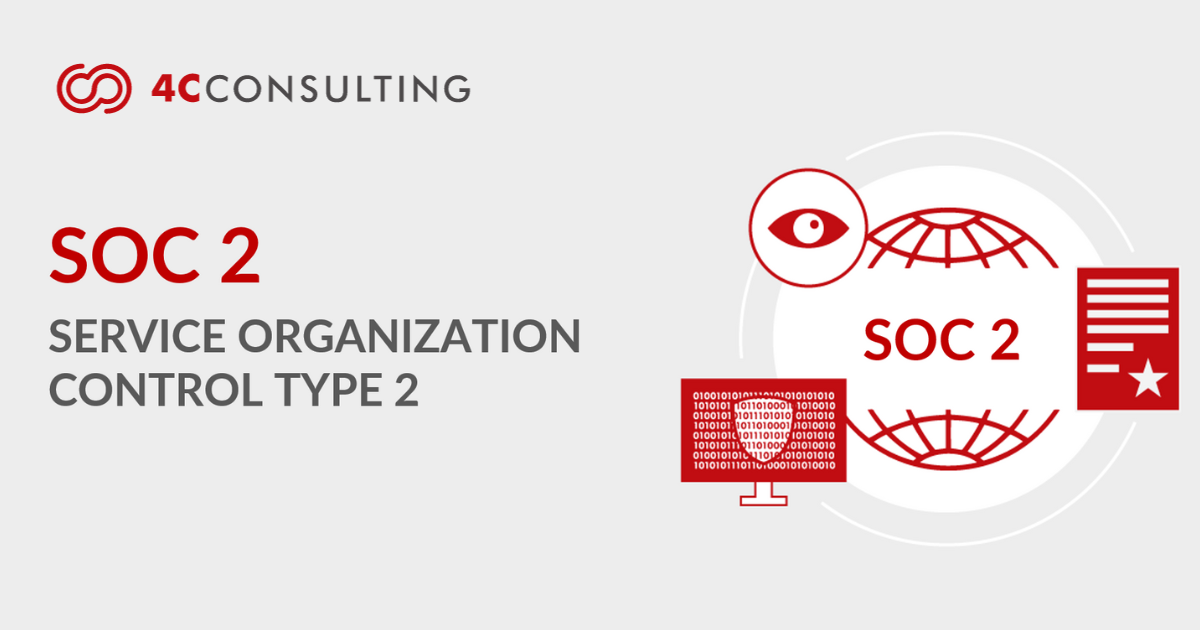
Achieving SOC 2 Compliance: Ensuring Data Security and Trust
6th Nov, 2023
In an increasingly connected and digital world, data security and privacy have become important issues for companies in all industries. With the increasing reliance on cloud services and third-party providers, it is imperative to take steps to protect sensitive information. This is where SOC 2 Controls (System and Organization Controls 2) compliance and certification comes into play. SOC 2 is a widely recognized framework that helps organizations establish and maintain effective controls over their systems and data. In this blog post, we will explore the importance of SOC 2 compliance, understand the certification process, and address the benefits and SOC 2 compliance requirements.
.
WHAT IS SOC 2 Compliance
SOC 2 (System and Organization Controls 2) is a framework that applies to any technology service provider or SaaS company that stores customer data in the cloud to ensure your organization continues to minimize the risk of data compromise. It outlines the five trust service principles of security, availability, processing integrity, confidentiality and privacy of customer data as a framework for protecting data.
SOC 2 compliance is part of the American Institute of CPAs’ Service Organization Control reporting platform. The purpose is to ensure that your customers’ data is safe and secure, that the organization is compliant, and that it has the necessary processes in place to mitigate risk.
SOC 2 is not a prescriptive list of controls, tools or processes. Rather, it identifies the criteria needed to maintain sound information security so that each organization can apply the practices and processes that are relevant to its own goals and operations.
.
Why SOC 2 compliance:
SOC 2 compliance plays an important role in establishing confidence in an organization’s ability to protect sensitive data.
Here are some reasons why compliance with SOC 2 is important:
- Improved Data Security: Compliance with SOC 2 requires organizations to implement and maintain robust security controls. By adhering to the defined criteria, organizations can significantly reduce the risk of data breaches and unauthorized access to sensitive data.
- Regulatory Compliance: Compliance with SOC 2 is consistent with various regulatory requirements, such as the General Data Protection Regulation (GDPR) and the California Consumer Privacy Act (CCPA). Compliance with SOC 2 ensures that companies meet their legal obligations and avoid large fines and reputational damage.
- Strengthened Customer Trust: Compliance with SOC 2 demonstrates a company’s commitment to protecting customer data. Through an independent audit, companies can assure their customers that their data is handled securely, which builds trust and fosters long-term relationships.
- Competitive Advantage: In today’s business environment, customers are becoming more security-conscious and prefer to work with companies that have strong data protection measures in place. SOC 2 Compliance can give companies a competitive edge by differentiating them from their competitors.
.
SOC 2 Type 1 and SOC 2 Type 2 Reports
SOC 2 reports come in two varieties:
Type 1 and Type 2. It is important for organizations seeking certification to understand their differences:
- SOC 2 Type 1 Report: Type 1 report assesses an organization’s controls and their design effectiveness at a given point in time. It provides an overview of the organization’s commitment to data security, but does not evaluate the operating effectiveness of controls over time.
- SOC 2 Type 2 Report: Type 2 report goes beyond the Type 1 assessment. It evaluates the design and operating effectiveness of controls over a period of time, typically six to twelve months. This comprehensive assessment provides stakeholders with deeper insight into the organization’s ongoing commitment to data security.
.
SOC2 Certification Process
The certification process for compliance with SOC 2 typically includes the following steps:
- Define the scope: organizations must determine the systems and services to be included in the SOC 2 assessment. When defining the scope, the Trust Services Criteria (TSC) defined by the American Institute of CPAs (AICPA) should be considered.
- Identify control objectives: Once the scope is established, organizations identify the control objectives that need to be addressed based on the TSC. These control objectives serve as the basis for implementing appropriate security controls.
- Implement Controls: Organizations implement security controls to achieve the identified control objectives. These controls may include technical measures as well as administrative policies and procedures.
- Documentation: Documentation is a critical aspect of compliance with SOC 2. Organizations must create detailed policies, procedures, and evidence to support the design and implementation of controls.
- Independent Audit: An independent auditor evaluates the implemented controls to determine if they are effectively meeting the established control objectives. For Type 2 certification, this evaluation covers a specified period of time to assess the ongoing effectiveness of the controls.
- Corrective Action: If deficiencies or gaps are identified during the audit, organizations must take the necessary actions to address them. This may include strengthening existing controls or implementing additional measures.
- Issuance of the Report: Upon completion of the audit, the auditor will issue a report SOC 2. The report will include information on the scope of the assessment, controls implemented, audit findings, and any areas of improvement identified.
.
SOC 2 Compliance Requirements
To achieve compliance with SOC 2, organizations must meet certain requirements, including:
- Written policies and procedures: Organizations must develop and document policies and procedures that describe the security controls in place. These policies should be communicated to all employees and reviewed and updated on a regular basis.
- Risk Assessment: A thorough risk assessment helps identify potential vulnerabilities and threats to data security. Organizations need to implement controls to mitigate these risks and ensure their ongoing effectiveness.
- Continuous Monitoring: Compliance with SOC 2 requires that organizations continuously monitor their security controls. This includes regular monitoring, testing, and review of controls to identify deviations or vulnerabilities.
- Employee Training: companies should regularly train their employees on data security, privacy and compliance. Employees need to understand their roles and responsibilities in complying with SOC 2.
.
Benefits of SOC 2 Compliance:
Meeting the SOC2 compliance requirements provides organizations with several benefits, including:
- Customer confidence: Compliance with SOC 2 demonstrates a commitment to data security and helps build customer trust. Organizations can assure their customers that their data will be handled securely, leading to stronger customer relationships and increased customer loyalty.
- Competitive advantage: Compliance with SOC 2 helps companies stand out from their competitors. It serves as proof to potential customers that a company has taken the necessary security measures to protect sensitive data.
- Risk Mitigation: Compliance with SOC 2 helps companies identify and mitigate risks associated with data breaches. By implementing robust controls and monitoring their effectiveness, companies can minimize the likelihood and impact of security incidents.
- Legal and Regulatory Compliance: Compliance with SOC 2 is in line with various legal frameworks and ensures that organizations meet their legal obligations. Compliance with regulations such as GDPR and CCPA becomes easier when SOC 2 controls are in place.
- Improved operational efficiency: compliance with SOC 2 drives organizations to implement and document robust policies, procedures, and controls. This promotes operational efficiency and consistency in handling data, resulting in smoother business processes.
SOC 2 compliance and certification are critical for organizations that want to protect the integrity of their data and build trust with their customers. By complying with the SOC 2 framework and completing the certification process, organizations demonstrate their commitment to data security, compliance, and risk mitigation. SOC compliance with 2 provides numerous benefits, including increased customer confidence, competitive advantage, and improved operational efficiency. Organizations should consider compliance with SOC 2 as an investment in their long-term success, as it helps protect sensitive data, comply with regulatory requirements, and strengthen relationships with customers and stakeholders. By complying with SOC 2, organizations can proactively respond to evolving data security challenges in today’s connected world.
.
HOW 4C CAN HELP YOUR ORGANIZATION IN SOC 2 COMPLIANCE CERTIFICATION?
4C aids your organization in building credibility and trust with clients, employees, and stakeholders while reaping the benefits of SOC 2 compliance. Our experts provide complete SOC 2 implementation support, including training and consulting. Our IRCA-certified auditors, boasting 15+ years of experience, have assisted over 100 IT and ITES companies with risk assessment and continuity planning. Through our services, companies globally have bolstered profitability and credibility. With a proven track record of 5000+ training hours in IT Security Management System (ISMS), we enable continual benefits. To embrace ISO standards and achieve SOC 2 compliance seamlessly, Contact us today.
